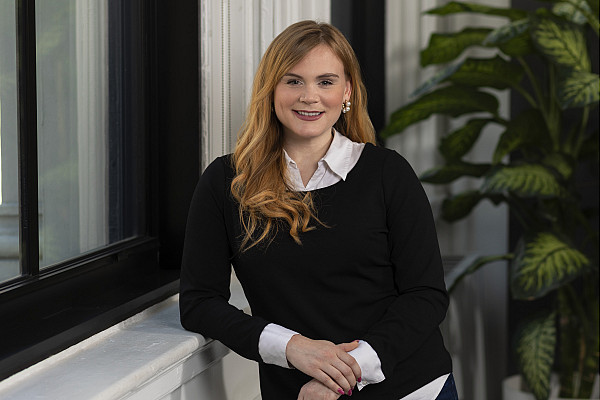
Designing Change: Kate Bormann’s ’18 Rise in the New York City Architecture Industry
For Kate Bormann ’18, her most recent recognition as one of the Top 30 Designers Under 30 in New York City by METROPOLIS is the culmination of the work she started as an art major and Bonner Leader at Ursinus College.
For Kate Bormann ’18, her career in the world of architecture has been on an upward trajectory in recent months. As an interior designer at Perkins Eastman Architecture, Bormann was recently named one of the Top 30 Designers Under 30 in New York City by METROPOLIS.
“It’s a really special award to get because New York City is obviously a very competitive place to be and I knew everyone who won and was nominated worked really, really hard,” Bormann said.
Bormann’s journey to the top of the architecture industry can be traced back to the experiences she had at Ursinus College.
As an art major at Ursinus, Bormann was very involved on campus. She worked at the Philip and Muriel Berman Museum of Art and was a part of organizations like UNICEF and the peer advocates program. Bormann was also a part of the Bonner Program, which allowed her to volunteer at a local prison for four years, helping educate inmates in pursuit of their GEDs.
“It was the root experience that inspired me to go to graduate school for architecture and design,” Bormann said.
While working at the prison, Bormann’s “classroom” was a less-than-ideal environment. The dark, cinder block room lacked natural light, fresh air flow, and the tables and chairs were rickety. Her art background allowed her to be extra attentive to the visuals and setting that she was teaching in, and she realized the effect the space was having on the people she was teaching.
“I got to see the effect the built environment had on the mental health of the inhabitants of the space,” Bormann said. “It inhibited people from being able to concentrate and impacted the way they felt about themselves.”
Through her experience, Bormann began to ask herself how she could help make that environment and those like it a better place.
“I wondered how I could apply my visual, artistic ability to the kind of negative built environment that I was working in,” Bormann said.
Upon graduation from Ursinus, Bormann followed in her father’s footsteps and began a career in architecture, first starting as an intern with a company. It was there that she discovered architecture was the career choice for her.
“You can engineer stories into space, and I feel like there is such an opportunity to create a sense of equality with architecture,” Bormann said. “It was satisfying for me because I also wanted to find ways to contribute to the world in a meaningful way.
After her internship, Bormann went to Drexel University and obtained her master’s degree in interior architecture and design. For her thesis project, she presented plans for a redesigned prison, which focused on a lot of the issues she saw with her own eyes while volunteering with the Bonner Program.
Now with two years of experience at Perkins Eastman and a Top 30 Under 30 Award to her name, Bormann emphasizes the importance that not only her volunteering experience had on her career path, but also her Ursinus education itself.
“Before I went to college, people asked what I was going to do with an art degree,” Bormann said. “They told me I wasn’t going to make money or get a job.”
Bormann’s professional experiences say otherwise. She credits Associate Professor of Art and Art History in Sculpture and Drawing Cari Freno, Assistant Professor of Art and Art History in Painting and Printmaking David Aipperspach, and Associate Professor of Art History Deborah Barkun for helping create the sort of environment within the art and art history department that has helped her reach her full potential.
“I love Ursinus so much, I’ve never experienced a community like it in my life,” Bormann said. “I feel like people genuinely want you to succeed and be happy, as a student and an alumna.”
Bormann continues to champion the value of the arts and the many ways they can forge a path to a successful career and fruitful life.
“Follow your heart,” Bormann said. “Do what you love to do, and you’ll make it work.”
